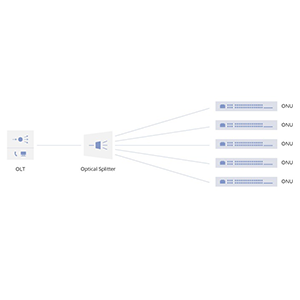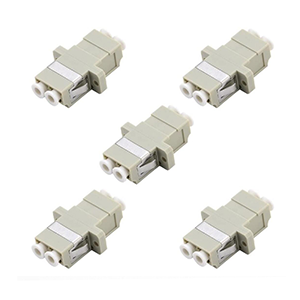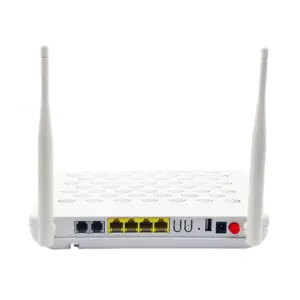Fiber patch cords play a key role in optical networks. This article will explore the issue of mixing APC (angled physical contact) and DPC (dual angle physical contact) fiber patch cords. We will first explain the basic structure and function of fiber patch cords and explain its importance in optical networks. Next, we will define the technical characteristics of APC and DPC fiber patch cords and compare their performance advantages.
Then, we will focus on analyzing the problems that may be encountered when mixing APC and DPC fiber patch cords, including mismatched fiber end face shapes, incompatible connector types, and inconsistent optical signal reflection characteristics. Finally, we will emphasize the importance of choosing the right APC or DPC fiber patch cord according to the actual application environment.
Overview of Fiber Patch Cords
Fiber patch cords are short fiber cables used to connect fiber devices or between fibers and devices. It is equipped with standardized connectors to ensure efficient optical signal transmission. Fiber patch cords are widely used in data centers, communication networks, and fiber testing to provide stable and reliable connections.
Basic structure and function of fiber optic patch cord:
Fiber optic patch cord is a fiber optic cable used to connect optical network devices. Its basic structure includes:
(1) Fiber core:
- Responsible for the transmission of optical signals, which can be single-mode or multi-mode optical fiber.
(2) Protective layer:
- Including buffer layer, sheath layer, etc., providing mechanical and environmental protection.
(3) Fiber optic connector:
- Such as SC, LC, FC, etc., used for detachable connection with device ports.
The main function of fiber optic patch cord is:
- To interconnect optical network devices such as switches and routers with optical signals.
- Establish reliable optical transmission paths between devices to achieve end-to-end optical transmission.
- Ensure the transmission quality and reliability of optical signals during the connection process.
Through the flexible connection of optical fiber jumpers, a complete optical network topology can be formed.
The importance of optical fiber jumpers in optical networks:
Optical fiber jumpers play a key role in optical networks, which is mainly reflected in the following aspects:
(1) Realize optical connection between devices:
- Connect various optical network devices, such as optical switches, routers, etc.
- Establish end-to-end optical transmission paths to complete the physical connection of optical networks.
(2) Support the construction of optical network topology:
- Flexible connector type and length selection to meet different network topology requirements.
- Simplify on-site construction and maintenance, and improve network deployment efficiency.
(3) Adapt to a variety of application scenarios:
- Widely used from access network, trunk network to data center.
- Meet the connection performance requirements of different optical networks.
(4) Ensure transmission quality and reliability:
- Good optical interface design ensures the quality of optical signal transmission.
- High reliability structural design improves the long-term stability of the connection.
In short, as the basic connection element in the optical network, the optical fiber jumper plays a key role in realizing optical transmission between devices, supporting network topology, adapting to a variety of applications and ensuring transmission quality. It is an indispensable component for building a high-performance optical network.
Features of APC and DPC fiber patch cords
APC fiber patch cords have a beveled end face design, which significantly reduces signal reflection and return loss, and is suitable for high-precision applications. DPC fiber patch cords use a flat contact design to optimize optical signal transmission, with higher return loss, but are suitable for general application scenarios. APC is more suitable for environments with strict signal quality requirements.
Technical features of APC fiber patch cords:
APC (Angled Physical Contact) fiber patch cords have the following technical features:
(1) Beveled end face design:
- The end face of the optical fiber core is processed into an angle of 8° to 15°.
- This beveled end face is the core design feature of the APC patch cord.
(2) High isolation and low reflection:
- The angled end face can reduce the reflection loss to an extremely low level, usually less than -60dB.
- APC patch cord can achieve an isolation of up to 60dB or more at the physical layer.
Technical features of DPC fiber patch cord:
DPC (Dual Polished Connector) fiber patch cord has the following technical features:
(1) Dual-angled end face design:
- Both ends of the optical fiber core adopt an angled end face of 8° to 15°.
- This dual-angled end face design is the core technical feature of the DPC patch cord.
(2) Ultra-low reflection characteristics:
- DPC patch cords can reduce reflection loss to an extremely low level, usually less than -65dB.
- This ultra-low reflection characteristic is one of the main advantages of DPC patch cords.
Comparison of performance advantages of APC and DPC fiber patch cords:
(1) Advantages of APC fiber patch cords:
- The angled end face design can effectively suppress optical interference and ensure signal independence.
- The low reflection characteristics help improve the transmission quality and stability of optical signals.
(2) Advantages of DPC fiber patch cords:
- The double-angled end face design can achieve extremely low reflection loss, less than -65dB.
- The extremely low reflection characteristics help ensure that the optical signal maintains the highest quality during transmission.
In short, APC and DPC fiber patch cords have different end face designs, showing their respective performance advantages in suppressing optical interference and achieving high-quality signal transmission, meeting the needs of different application scenarios.
The problem of mixing APC and DPC fiber patch cords
Mixing APC and DPC fiber patch cords may cause increased signal reflection and return loss, affecting the quality of optical fiber communication. The beveled end face of the APC patch cord is incompatible with the flat contact of the DPC. It is recommended to use the same type of patch cords in the system to ensure optimal performance.
The shape of the fiber end face does not match:
(1) The geometric difference between the APC and DPC end faces:
- APC uses a single-sided beveled end face of 8° to 15°.
- DPC uses an angled end face with an angle of 8° to 15° on both sides.
(2) Impact of end face mismatch on signal transmission:
- Differences in end face geometry will lead to increased optical signal coupling loss.
- Seriously affect the transmission quality and reliability of optical signals.
Incompatible connector types:
(1) Structural differences between APC and DPC connectors:
- APC uses a special angled connector design.
- DPC uses a different double angled connector structure.
(2) Problems caused by connector mismatch:
- Unable to achieve physical connection and establish optical channels.
- Will destroy the overall topology of the optical network.
Inconsistent reflection characteristics of optical signals:
(1) Differences in reflection performance between APC and DPC patch cords:
- The reflection loss of APC is less than -60dB.
- The reflection loss of DPC is less than -65dB, even lower.
(2) Impact of reflection characteristic differences on network quality:
- Reflection differences can cause optical signal distortion and interference.
- Affects the overall transmission performance and reliability of the network system.
In short, APC and DPC fiber patch cords have obvious differences in end face shape, connector design, and reflection characteristics. Therefore, they should not be mixed, otherwise the performance and stability of the optical network will be seriously affected. In practical applications, it is necessary to select a matching fiber patch cord solution based on specific needs.
How to choose a fiber optic patch cord correctly
When choosing a fiber optic patch cord, you need to consider the connector type (such as LC, SC), end face design (such as APC, UPC) and application requirements (such as high-density connection, low return loss). Ensure that the patch cord is compatible with the device to optimize signal transmission quality and system performance.
Recommend suitable APC or DPC patch cords according to the application environment:
(1) General optical network applications:
- It is recommended to use APC fiber optic patch cords.
- APC has good optical isolation and reflection suppression capabilities, which can meet the needs of most network applications.
(2) Professional applications with extremely high requirements for optical signal quality:
- It is recommended to use DPC fiber optic patch cords.
- DPC can achieve ultra-low reflection loss, ensuring that the optical signal maintains the highest quality during transmission.
- Applicable to fields with strict signal quality requirements such as observatories and military communications.
(3) Data centers and high-speed optical networks:
- Both types of patch cords can be used, and a balance needs to be made based on specific needs.
- Strive for a balance between cost and performance.
Emphasis on the importance of choosing matching fiber patch cord types:
(1) End face shape and connector type must match:
- APC and APC, DPC and DPC can only be connected normally.
- Mismatched end faces and connectors can lead to serious optical signal transmission problems.
(2) Reflection characteristics need to be consistent:
- The reflection performance of jumpers on the same optical path must be coordinated and consistent.
- Inconsistent reflection characteristics will cause interference and distortion of optical signals.
(3) Ensure the overall performance and reliability of the optical network:
- Correctly selecting matching fiber jumpers is the key to ensuring the stable operation of the optical network.
- It helps to maximize the performance advantages of the optical network.
In short, in actual applications, it is very important to select the appropriate APC or DPC fiber jumper according to different environments. At the same time, it is necessary to ensure that the parameter characteristics of the selected jumper are completely matched, which is crucial to ensuring the overall performance and reliability of the optical network.
Summary
In building a high-performance optical network, it is crucial to select the right type of fiber jumper. Our company has long been focusing on the research and development and application of APC and DPC fiber optic patch cords, and has rich practical experience. We provide various high-performance APC and DPC fiber optic patch cord products, which are widely used in data centers, 5G fronthaul, FTTH and other fields.
Our fiber optic patch cords adopt the industry-leading manufacturing process, and have achieved excellent levels in key performance indicators such as reflection loss and isolation. At the same time, our team of engineers will provide you with professional demand analysis and solution design services to ensure that the selected fiber optic patch cord can meet your actual needs to the greatest extent. Contact us now to learn more. We will do our best to provide you with the best quality products and solutions.
APC Patch Cord And DPC Patch Cord FAQ
Yes, APC and DPC patch cords can be used together, but it’s important to ensure compatibility. Mixing them might affect performance, especially in terms of signal reflection and return loss.
Mixing APC and DPC patch cords can lead to increased signal reflection (higher return loss) at the connection points. This could result in reduced signal quality and performance issues in the network.
Mixing APC and DPC patch cords is generally acceptable in environments where return loss is not a critical factor and where the performance requirements are less stringent. However, it’s usually best to match connector types to maintain optimal performance.
When APC and DPC patch cords are mixed, the performance may be compromised due to increased return loss and signal reflection. This can lead to degraded signal quality and potential data transmission errors.
No, mixing APC and DPC patch cords typically does not cause physical damage to the connectors. However, it can lead to performance issues due to mismatched optical characteristics.
To ensure optimal performance, use APC patch cords exclusively with other APC connectors and DPC patch cords with other DPC connectors. Avoid mixing them in the same signal path.
High-speed and high-precision applications, such as telecommunications and data centers, are more sensitive to mixing APC and DPC patch cords due to their stringent performance requirements for low return loss and high signal integrity.
Evaluate the performance requirements of your network. If minimizing signal reflection and maintaining high signal quality are critical, avoid mixing APC and DPC patch cords. For less critical applications, mixing may be acceptable.
There are no specific standards for mixing APC and DPC patch cords, but industry best practices suggest using matching connector types for optimal performance. Refer to your equipment manufacturer’s recommendations for guidance.
When replacing patch cords in a network where APC and DPC are mixed, aim to standardize on one type of connector to ensure consistent performance. Use either all APC or all DPC patch cords, depending on your performance needs.




